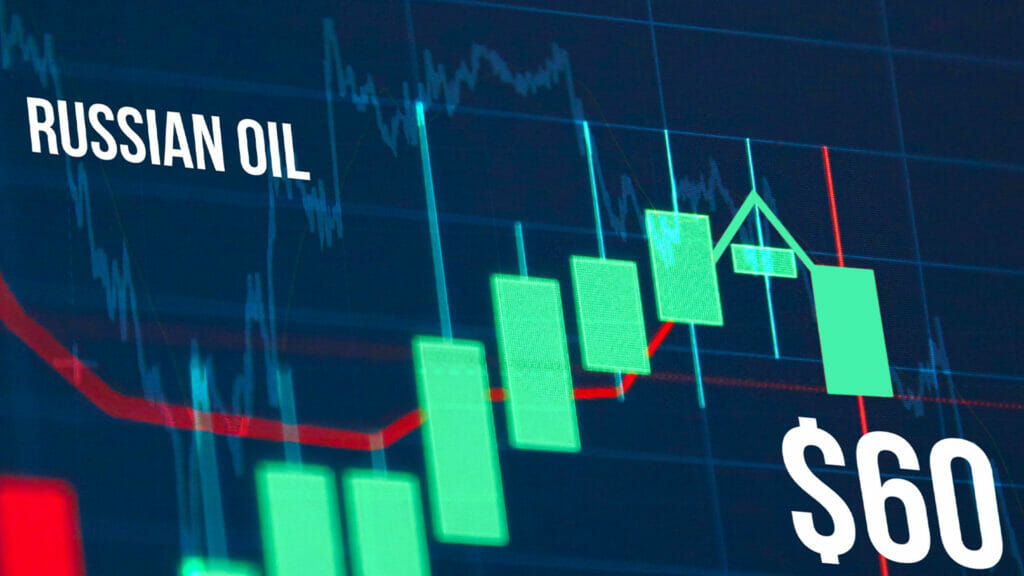US refrains from lowering Russian crude oil cap despite requests from Kyiv

The administration of President Joe Biden said that it has no intention of lowering the Russian oil cap from $60 per barrel to $30 per barrel despite multiple requests from Ukraine to do so. The White House is worryed that the move can destabilize the world’s economy and weaken global support for Ukraine, The Washington Post wrote.
According to people familiar with the issue, the twofold drop in the oil cap may push Russia to cut its oil production, which would cause a sharp price surge for natural gas. Moreover, because of the upcoming presidential elections in the U.S. next fall, any decision related to the oil cap would require negotiations with the European allies and pose a risk of weakening military support for Ukraine. One of the media outlet sources stressed that this is the key risk the U.S. authorities are worrying about.
Oleg Ustenko, advisor for the Ukrainian president on economic issues, believes that it is very important for Western countries to stay unified.
«We need significant downward pressure on the price cap, or the Russians will have enough cash on hand to continue this war,» he said.
Elina Ribakova, senior researcher at the Peterson Institute for International Economics and head of international programs at the Kyiv School of Economics, agrees. According to the expert, the Russian government will likely sustain any spike in inflation «unless the government has to start printing money to support the budget.» Janis Kluge from the German Institute for International and Security Affairs says that the growing inflationary pressure can turn economic problems in Russia into political ones. The question, however, is how long the Russian people will tolerate the high inflation.
Some other sources insist that inflationary pressure has already raised some questions about the sustainability of President Vladimir Putin’s tactics. They point out, for example, the anxiety of the Russian Deputy Minister of Trade and Industry Viktor Yevtukhov, who met with representatives of the retail industry this month and demanded «that they limit any price hikes.»
In December 2022, the E.U. imposed a ban on imports of Russian oil and set an oil cap at $60 per barrel for third-party countries. The U.S., Canada and Japan have also joined the ban. Under the oil cap Western transportation and insurance companies are banned from facilitating the export of Russian oil at a price higher than $60 per barrel. At the same time, the U.S. Department of Treasury doesn’t mind the Russian oil sold for more than $60 to be transported by third-party countries’ vessels (like Australia, for example). According to Alexander Novakov, Russian deputy prime minister, the country redirected a vast amount of its oil and gas exports toward «friendly» countries last year. For instance, Russian export to India has risen 22 times.
As of August 26, Russia exported about 3.4 million barrels per day by sea, which was the maximum since the end of June. India and China are the key buyers of this oil. Over the past month, they exported more than one million barrels of oil a day. As a result, the Kremlin’s revenue rose by 35% to $47 million a day for the past four weeks on average.
At the beginning of July, the Russian Ministry of Finance announced that the monthly dynamic of oil and gas revenues gradually moved to the base rate of $83 billion. At the same time, the agency reported a decline in oil and gas revenues over the period from January to June by 47% from year to year to $35 billion. The Ministry of Finance explained this decline with the high base of the last year, lower process and decreasing amount in export of natural gas.
According to the International Energy Agency (IEA), in June, Russian exports of oil and oil products dropped by 600,000 barrels to 7.3 million barrels per day compared to May, which is the lowest rate since March 2021. In March and August 2023, Russia said it would voluntarily cut its oil output by 500,000 per day. In September, Russia will cut the oil production level by an additional 300,000 barrels per day.
In order to offset the situation of declining oil exports, Russian authorities have started gradually decreasing a discount for oil for tax calculations. According to their plan, the discount should have been declined from $34 per barrel in April to $25 per barrel in July. At the end of July, Russia’s Deputy Minister of Energy Nikolay Shulginov told the TASS news agency that the discount to the Urals decreased to less than $15 per barrel.
In the middle of July, Bloomberg reported that the price for the Urals in the port of Novorossiysk hit the ceiling and reached $60.78 per barrel. According to the edition, this data may have shown that Russia won economically because it managed to create a shadow fleet of vessels big enough to transport Russian oil to customers with no services from G7 companies.”
As of August 1, the Russian Ministry of Finance reported that over the period from January to July 2023, the Urals price was at $53.94 per barrel on average. In January-July 2022 the price was at 83.27 per barrel. In July 2023, Russian oil cost $64.37 per barrel, which is 1.2 times lower than it was in July 2022 ($78.41 per barrel).

